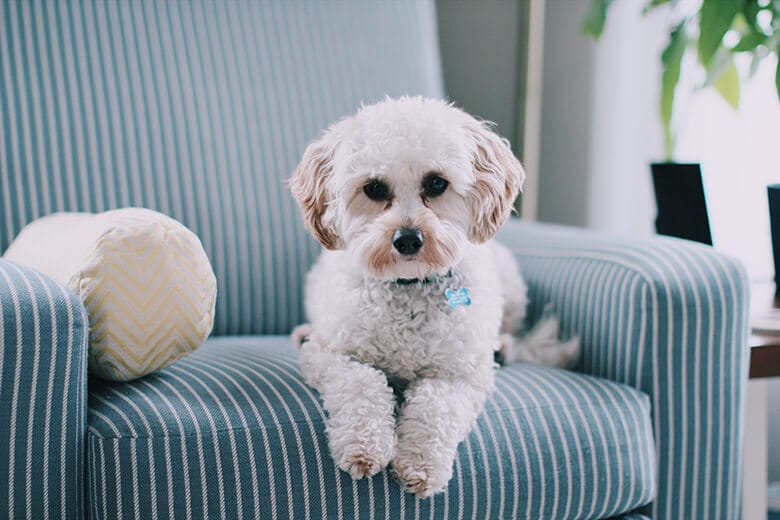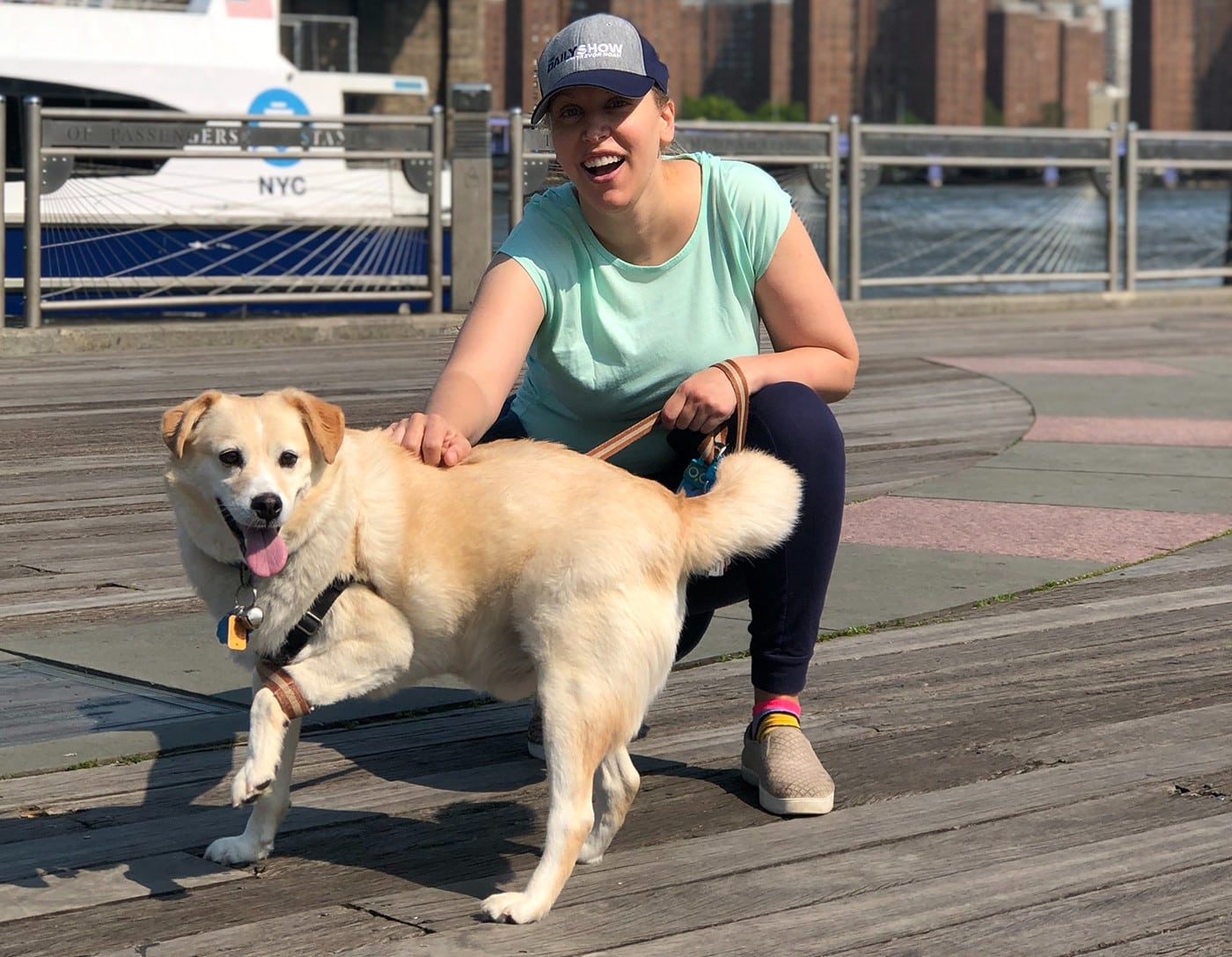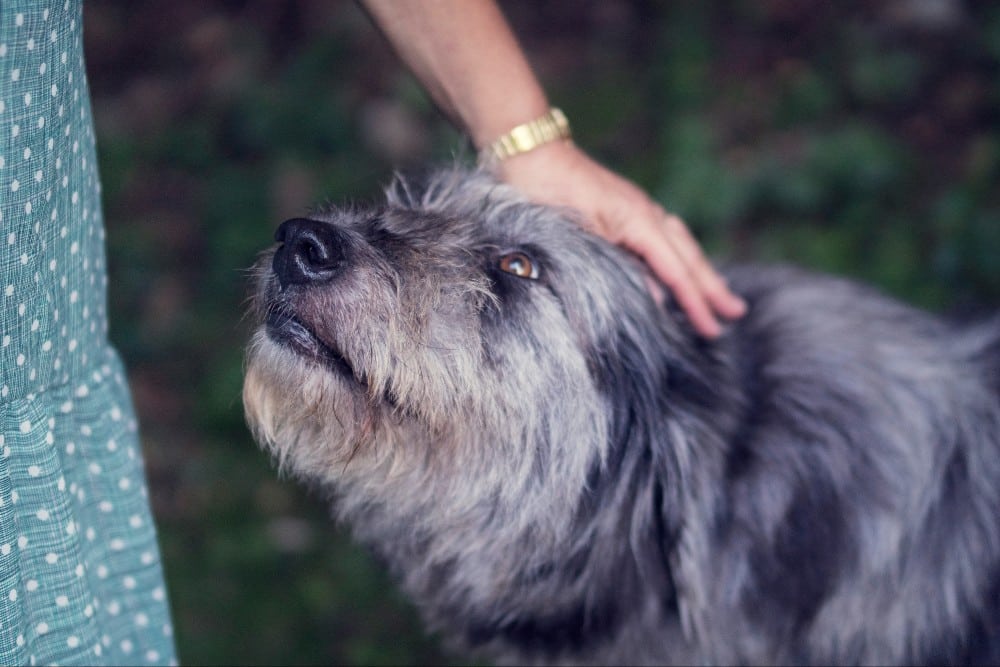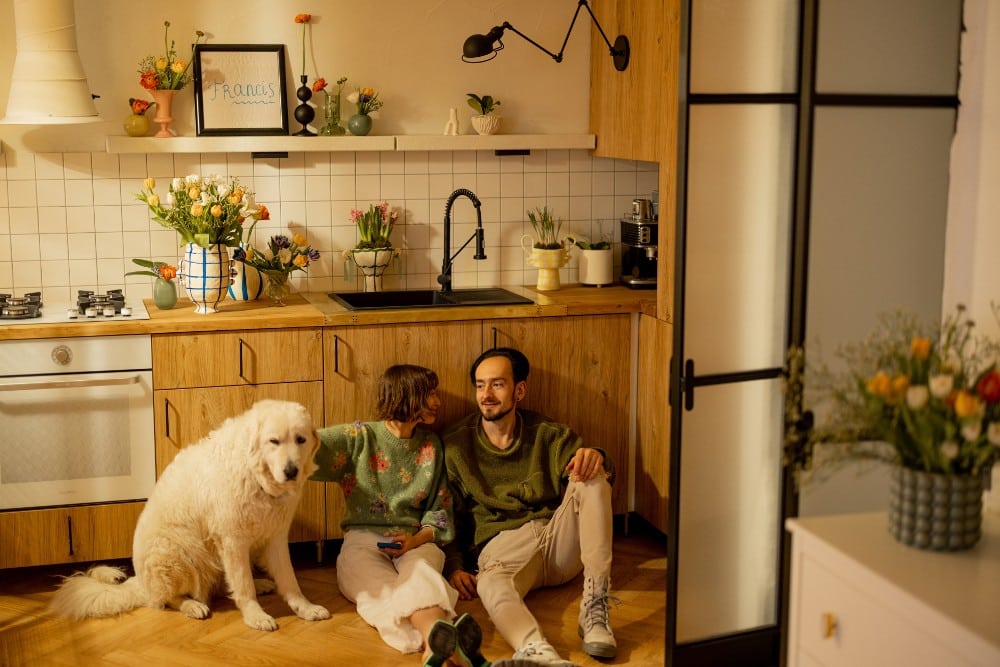How many times have you heard someone with a dog asking them, “what?” as if the dog will suddenly launch into a soliloquy on the merits of pork versus beef sausage, or whatever constitutes as deep thinking for a dog.
While many of us think our dogs will respond to our questions, we hate to break it to you, but it’s not going to happen.
But the fact that dogs can’t talk doesn’t mean it’s hopeless trying to figure out what your pup wants when she whines/barks/growls/chases her tail/paws at the ground. In fact, we can understand the language of dogs if we just know how to look and listen.
Dogs tell us what they want with their body language. It’s quite possible that every time we ask “what do you want” in our silly baby voices, our dog is answering with his posture.
Dogs use their bodies to communicate (including when they are trying to warn us, and other canines, to stay away).
Related: The 7 Books All Dog Parents Need To Read
There are seven major areas of body language with which your dog tries to communicate:
- Eyes
- Ears
- Tail
- Mouth
- Hair
- Sweat/Panting
- Body Posture
When reading your dog’s body language, you have to observe of these areas in order to decode the secret language of dogs. Remember, all body language in any part of a dog’s body must be read in relation to other parts to figure out what your dog is trying to say. For example, if you see the hair on your dog’s back stand up, you must look at other parts of the body to determine if she’s afraid, excited or angry.
Here’s a brief primer on the most basic signals dogs communicate using their body language.
Eyes
Squinting or almond-shaped eyes: A dog that has almond-shaped eyes, or that appears to squint at you, means the dog is relaxed.
Whale eyes: When a dog is feeling nervous or afraid, look at the eyes. If they widen, and the dog turns away but keeps looking at the perceived threat, causing a lot of white around the pupils to show, that’s whale eyes. It means your dog is afraid.
Glassy eyes: When the pupils are dilated and the eyes appear glassy, it can mean the dog is stressed or fearful.
No eye contact: When the eyes are averted, it can mean a dog is worried or threatened.
Hard, staring eyes: When two dogs are staring directly and intently at each other, it indicates aggression and a fight about to happen. If it’s safe, pull the two dogs away before they attack.
Mouth
Relaxed, “smiling” mouth: A relaxed mouth that’s often open and panting and appears to turn up in a smile, indicates a happy, relaxed dog.
Tense jaw: The mouth is closed and tight, and the lips are pulled back at the corners, indicating a fearful dog.
Excessive panting for no reason: A dog that is panting heavily when it isn’t hot or he hasn’t been exercised indicates the dog is stressed.
Curled lips and bared teeth: A dog with lips pulled back, teeth bared and possibly growling, is a sign of aggression, especially if accompanied by a growl.
Yawing and licking the lips: Although the teeth are visible, it indicates a stressed dog rather than aggression.
Sweat/Panting
Heavy rapid panting: If the dog is breathing with short, fast breaths and a tight mouth, this could indicate stress.
Wet footprints: Dog sweat glands are located in their paws. If a dog is sweating so heavily that he leaves wet footprints, that could indicate distress.
Related: Can Dogs Really Understand Our Words? A Study Set Out To Find The Answer.
Ears
Ears positioned naturally: When the ears are positioned normally, whether that’s up or down, it indicates a relaxed dog.
Ears back and flattened to the skull. More visible in dogs with upright ears, it indicates a stressed dog.
Ears move forward: Ears that move forward show curiosity and interest.
Ears move backward: Ears that move backward indicate stress.
Hair
Hackles raised: Raised hair on the dog’s back and neck indicates aggression, fear or excitement.
Hair shedding suddenly and excessively: When the hair suddenly starts shedding more than usual, it can indicate stress or fear.
Tail
Tail held at neutral to slight raised height, fast wag: happy and friendly.
Tail tucked between the legs: A dog with a tail tucked between their legs indicates stress or fear. The tail may wag a little, but slowly.
Raised tail: A tail raised above the spine, moving rapidly, indicates excitement.
Tail extended from spine: A tail held in its normal position, aligned with the spine or slightly raised, indicates the dog is relaxed.
Tail rigid and held high: The dog is aroused and about to react.
Tail raised and wagging back and forth rapidly: Called “flagging,” this indicates a dog about to defend itself by attacking.
Related: How to Make Your Dog Feel Comfortable In a New Home
Body Position
Play bow: When the front of the body is down and the rear end is up, it indicates a dog who wants to play.
Stiff and upright: A body that’s stiff and abnormally upright indicates a dog that is stressed or agitated.
Body dropped to the ground: When this occurs when a dog sees another dog, it indicates that they want to play; it’s often accompanies by a play “pounce” when the other dog is within reach.
Body crouching: When a dog is crouched low to the ground and cowering, it indicates extreme fear.
Body lowered: When a dog’s body is lowered to the ground, with the front end even lower, it indicates a fearful, aggressive dog.
How to Read Your Dog’s Mood
To understand what your dog is saying, you have to look at the whole body rather than a single part. Here are some examples of how to read what your dog is saying by noting each part of your dog’s body language as a comprehensive whole.
Some, all or a mixture of behaviors can be seen depending on the situation. For example, an anxious dog in general may exhibit different behaviors from an anxious dog in a kennel environment. You have to look at the situation, the dog, the recent past and present events and environment and any other factors relevant to the current situation. (Also, consult with a behaviorist or trainer to get some professional advice.)
Let’s Play!
- “Play Bow” position
- Tail up
- Tail waving
- Ears up
- Pupils dilated
- Mouth slightly open
- Tongue exposed
- Playful barking
- Play attacks alternated with body freezing
Related: Chris Evans’ Love For His Dog Put On Full Display In Happy Reunion
Relaxed Dog Who Can Be Approached:
- Ears up in natural position
- Head held high
- Mouth slightly open with tongue sticking out
- Corners of mouth may be turned up in what looks like a smile
- Relaxed stance with weight on the feet flat on the ground
- Tail held loosely and relaxed
Fearful Dog Who Should Not Be Approached:
- Body lowered in a crouch
- Hackles raised
- Tail tucked with little movement
- Ears back
- Dilated pupils
- Nose wrinkled
- Lips somewhat curled
- Teeth possibly visible
- Mouth has corners pulled back
- May lick at the air
Warning: Stay Away!
- Whale eyes
- Dilated pupils
- Head turned
- Gaze on the subject of the warning
- Ears back
- Mouth wet
- Tongue flicking
- Tense body posture
- Tail down
Anxious, Stressed Dog
- Excessive panting
- Pacing
- Licking the lips
- Yawning
- Ears slightly back
- Body slightly lowered
- Tail may wag slowly
- Moving away from people
- Shut down
Related: How to Deal With An Anxious Dog
Anxious, Stressed Dog in a Shelter or Kennel
- Barking
- Pacing
- Circling
- Spinning
- Bouncing off walls or kennel bars
- Lunging at other dogs passing the kennel
Extreme Fear: Submission
- Rolls onto the back with throat exposed
- Head turned
- No eye contact
- Eyes partly closed
- Corners of mouth back
- Mouth closed
- Tail tucked
- Ears flat and back
- May urinate slightly
As you can see, a dog’s body language can be complex with many varieties and mixing of signs. The sooner you identify how your dog reacts to specific situations, the easier it will be to understand what she is trying to tell you — and that is one of the greatest gifts that a human can give to a dog.
The above is not meant to be professional advice. Please contact a trainer or behaviorist for advice.


















